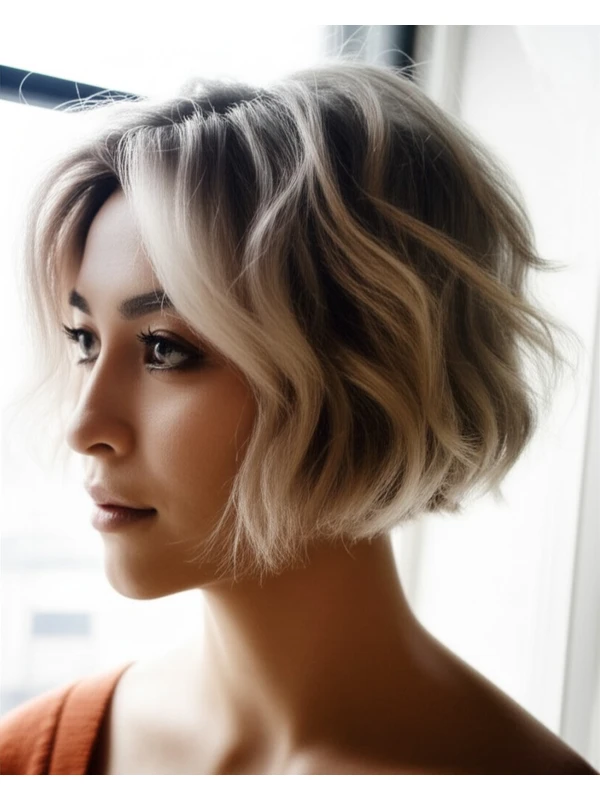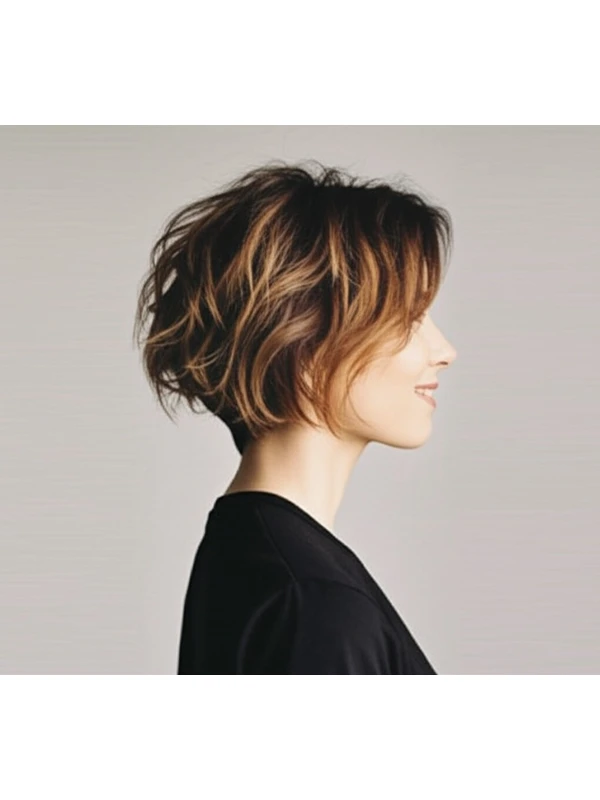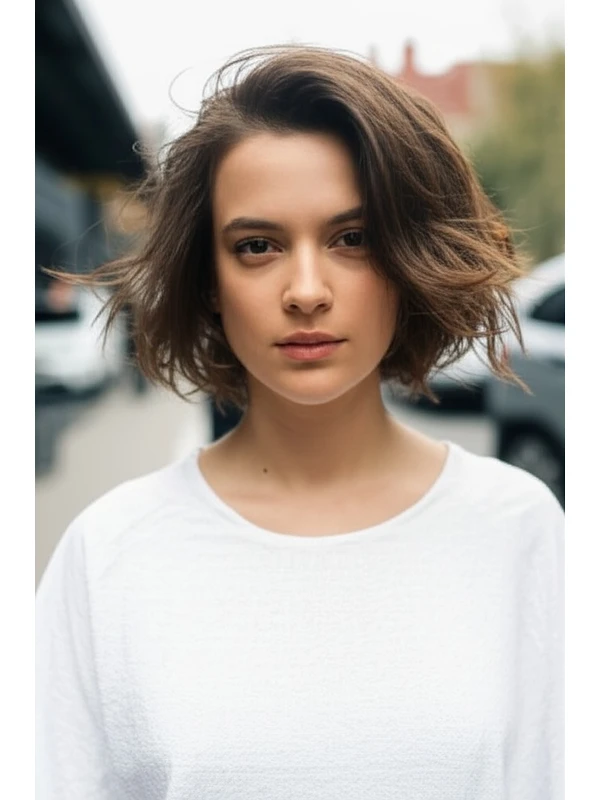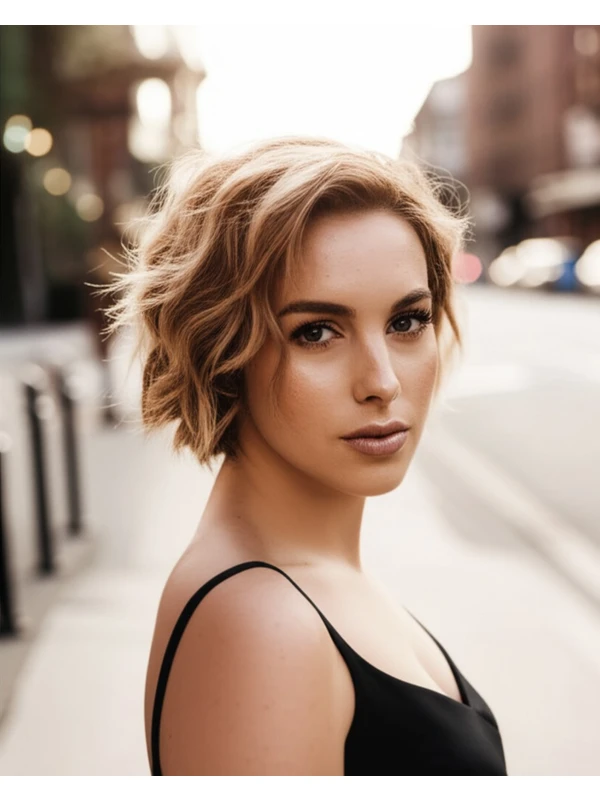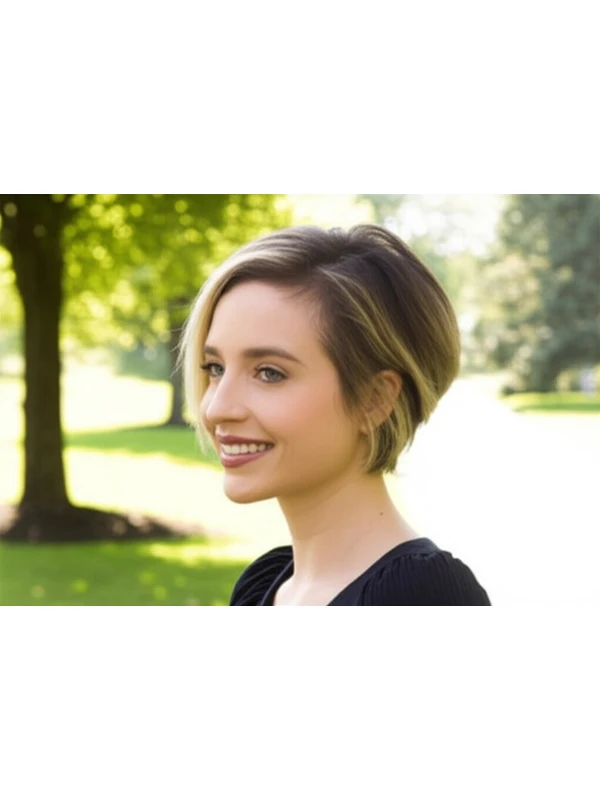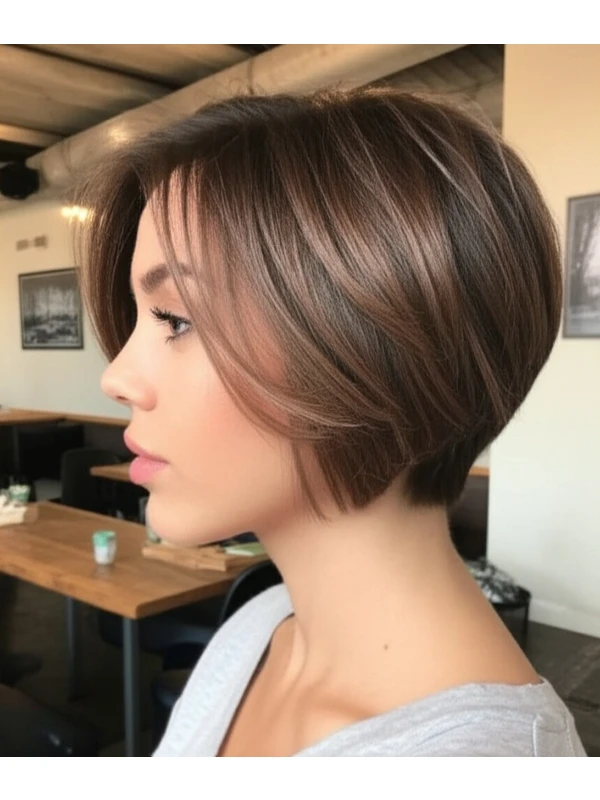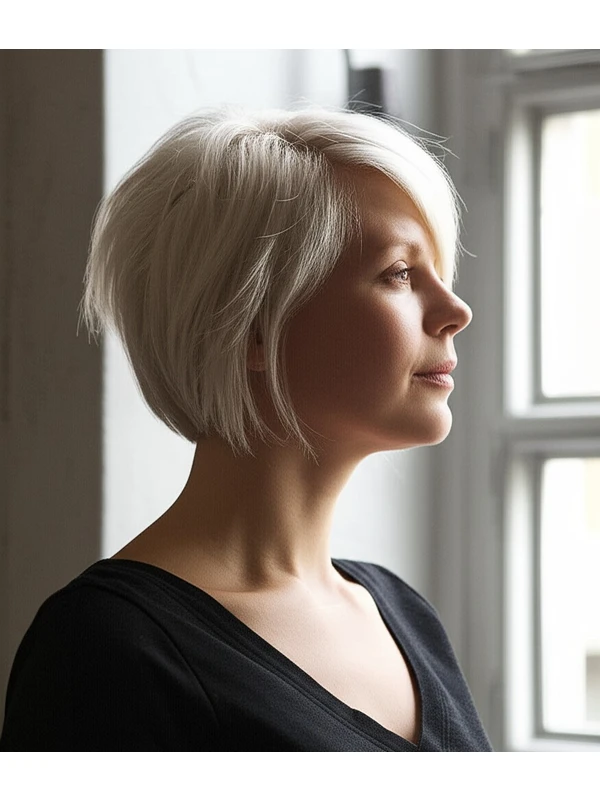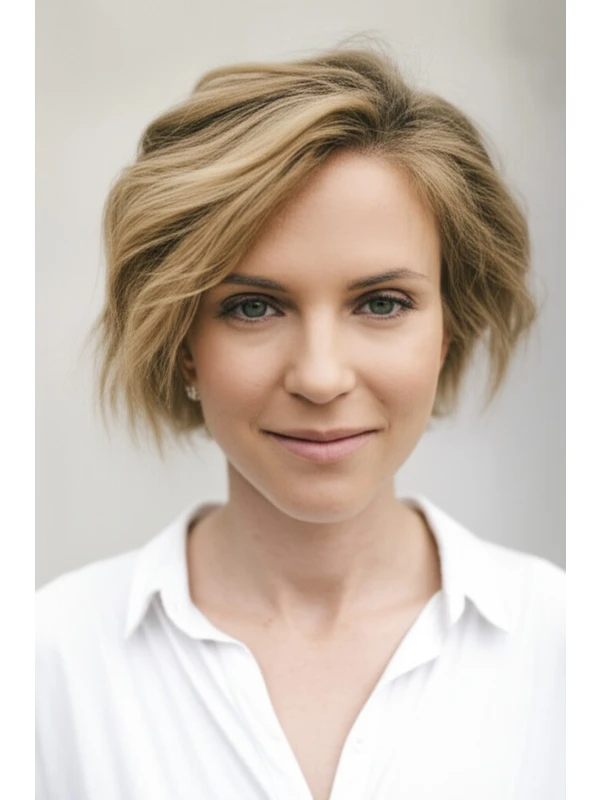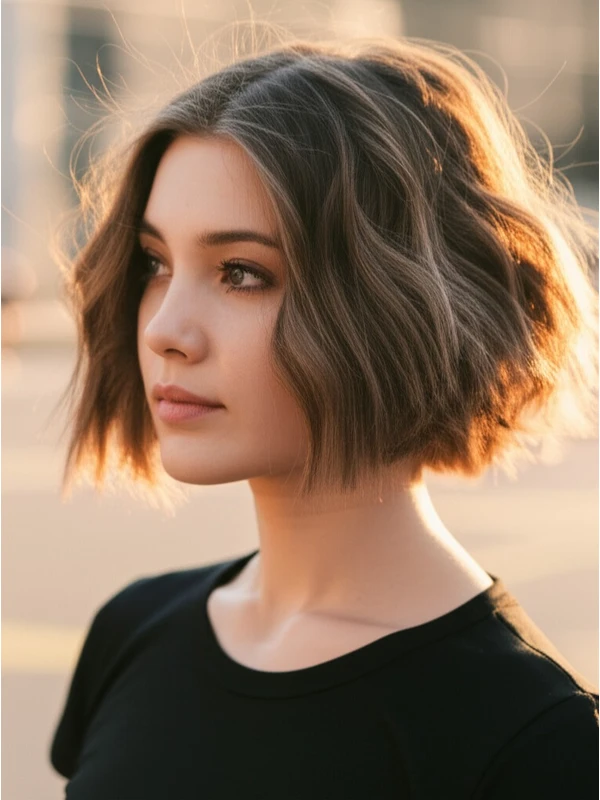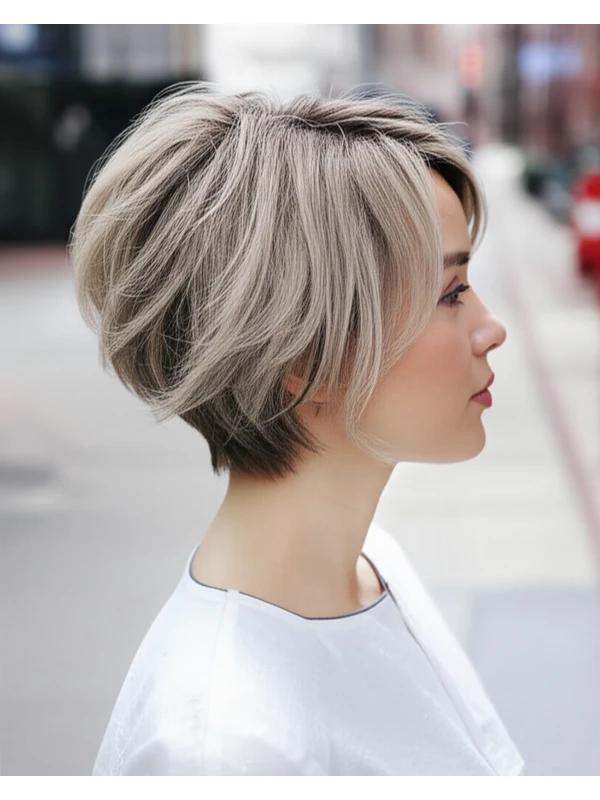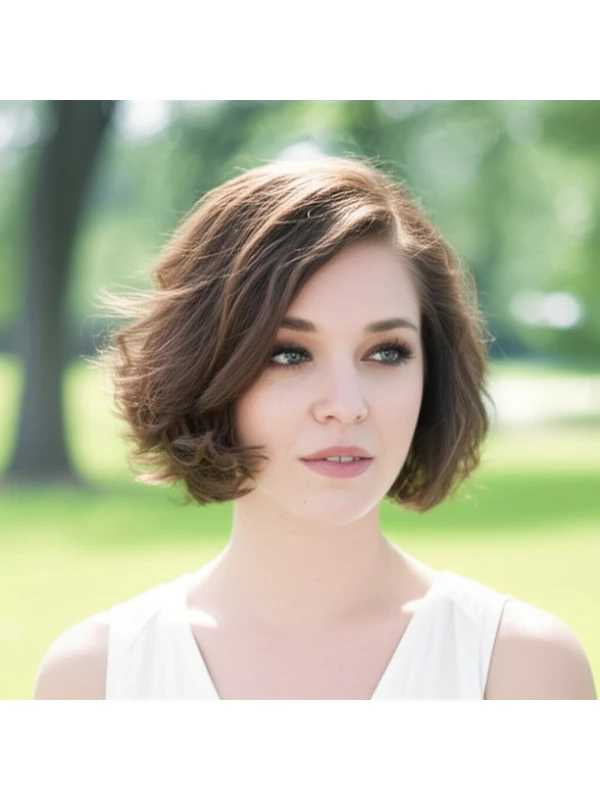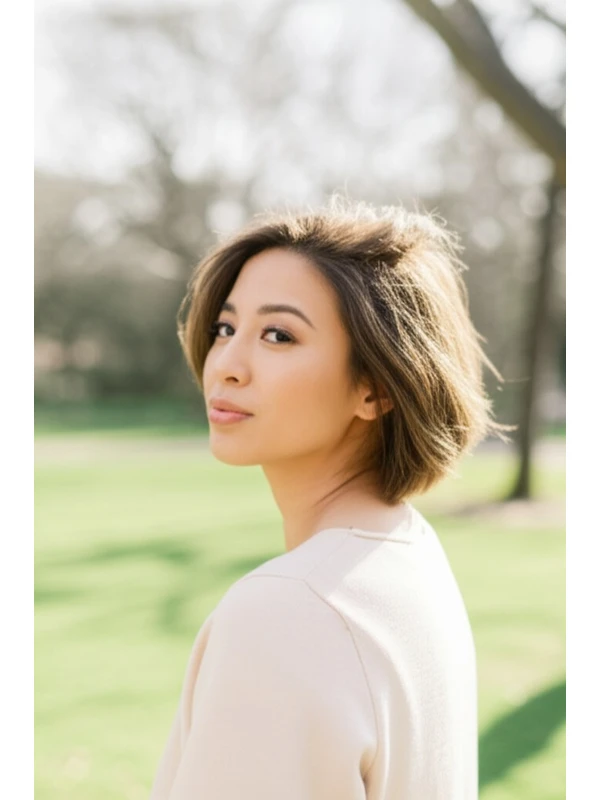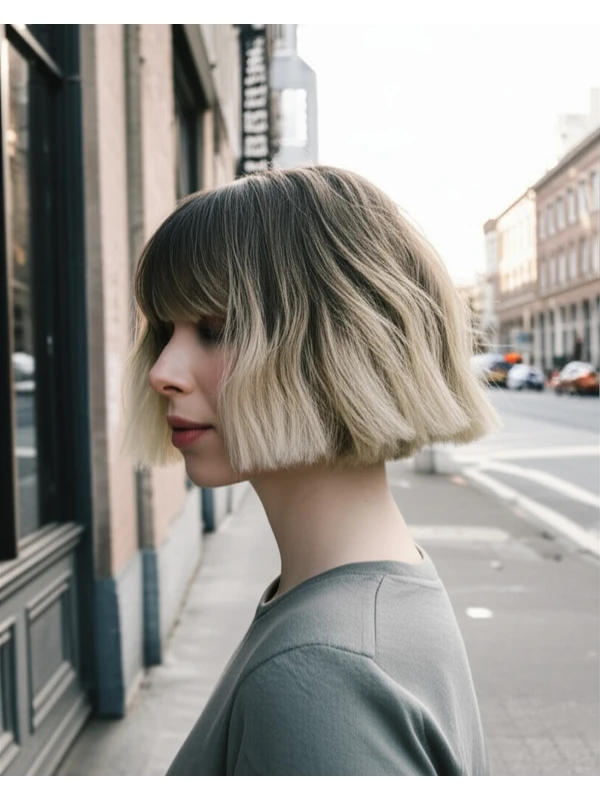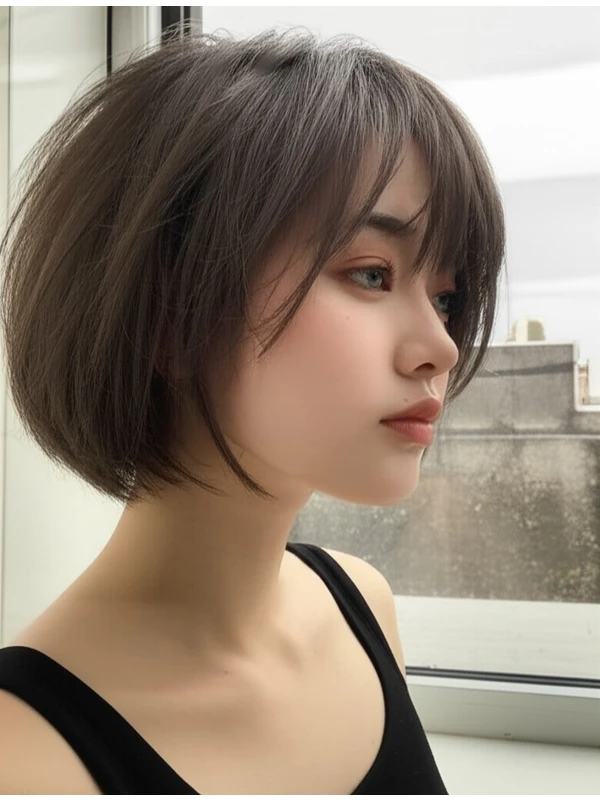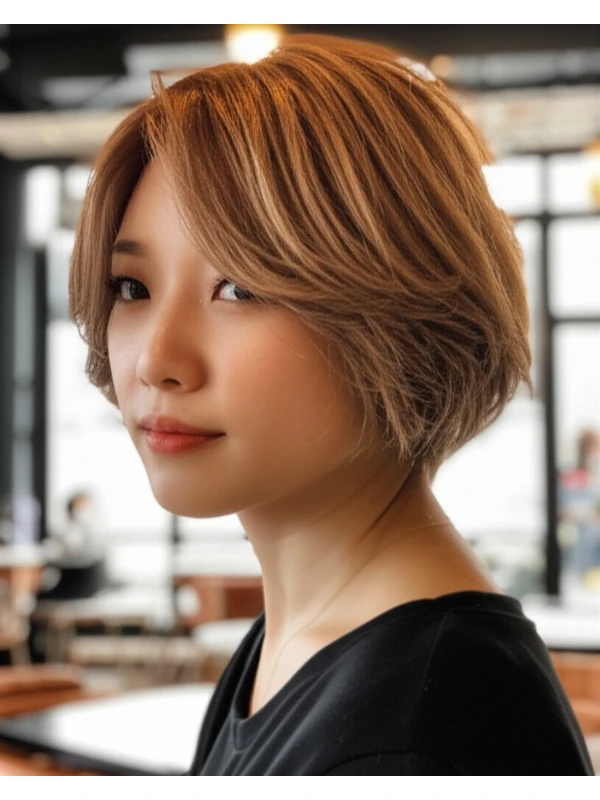#The Asymmetrical Bob: A Modern Classic
The asymmetrical bob is a timeless hairstyle that's making waves (pun intended!) for its versatility and chic appeal. It’s more than just a haircut; it's a statement. Let's dive into everything you need to know about this flattering style, from finding the perfect fit for your face shape to keeping it looking fresh between salon visits.
#1) Background & Definition: What is an Asymmetrical Bob?
An asymmetrical bob (often shortened to "asym bob") isn’t just a random chop – it's all about geometry! It’s essentially a bob haircut where one side is longer than the other. This creates visual interest and movement.
- Key Features: Uneven lengths, sharp lines (though softness can be incorporated), modern feel.
- Typical Length Ranges: Generally falls between chin-length to just below the jawline, but variations exist with shorter or longer sides. The difference in length between sides is usually no more than 2-3 inches.
- Alternative Names: Angled bob, tilted bob, one-sided bob.
#2) Face Shape Fit: Finding Your Angle
The beauty of the asymmetrical bob lies in its ability to flatter a variety of face shapes, but adjustments are key! Here's how it works for each:
- Oval Faces: Lucky you! Almost any asymmetrical bob will look fantastic on an oval face. Experiment with different angles and lengths. A side-swept fringe can add softness.
- Round Faces: The asymmetry helps to visually lengthen a round face. Longer sides are best, creating the illusion of more length. Avoid blunt bangs which can emphasize width. Angled layers around the cheekbones will slim the face further.
- Square Faces: Soften those angles! A longer asymmetrical bob with soft layering and a gentle side part is ideal. Avoid sharp lines that accentuate the jawline. A wispy, feathered fringe can also help to soften features.
- Heart-Shaped Faces: The asymmetry balances out a wider forehead. Volume at the sides helps create balance. Chin-length or slightly longer bobs work well. Consider a face-framing fringe for extra softness.
- Diamond Faces: Similar to heart faces, an asymmetrical bob adds width to narrow cheekbones and softens sharp angles. A side part is essential for creating asymmetry and movement. A textured fringe can also be very flattering.
- Oblong (Long) Faces: Shorter, more stacked versions of the asymmetrical bob work best. This creates the illusion of width. Avoid styles that are too long or sleek as they will only emphasize length. A blunt, straight-across fringe is a good option to shorten the face visually.
#3) Body Proportions & Height Guidance: Playing with Silhouette
The asymmetrical bob isn't just about your face; it impacts your overall silhouette!
- Petite: Shorter lengths (chin-length or slightly above) create a more balanced look. Too much length can overwhelm a smaller frame.
- Average Height: You have the most flexibility! Experiment with different lengths and angles to find what you love.
- Tall: Longer asymmetrical bobs, extending just below the jawline, can help balance your height.
- Narrow Shoulders: Volume on the sides of the bob creates a more balanced look. Avoid styles that are too flat or close to the head.
- Broad Shoulders: A slightly shorter, angled cut with less volume at the shoulders will minimize width.
- Short Neck: Avoid bobs that are too short and blunt as they can accentuate a short neck. An angled bob with layers helps elongate the neck visually.
- Long Neck: Longer asymmetrical bobs work well to balance a longer neck, adding visual weight.
#4) Works Best With Hair Types & Densities: Texture Matters!
The success of an asymmetrical bob depends on your hair's natural texture and density.
- Straight Hair: The sharp angles of the asymmetry really shine with straight hair. Consider a sleek finish for maximum impact.
- Wavy Hair: Embrace those waves! The asymmetry adds dimension and movement to naturally wavy hair. Air-drying is often an easy styling option.
- Curly/Coily Hair: This style can work, but communication with your stylist is crucial. Shorter lengths are generally better to avoid excessive bulk. Be prepared for shrinkage – what looks like a long bob in the salon might become a shorter bob as it dries!
- Fine Hair: Layers and texturizing will add volume and prevent the hair from looking too flat. A blunt cut can make fine hair appear thicker.
- Medium Hair: The asymmetrical bob is generally very flattering for medium density hair, offering versatility in styling.
- Thick Hair: Thinning out layers is essential to avoid a bulky look. Consider point-cutting techniques to remove weight and create movement.
Shrinkage Note (Curls/Coils): Curly and coily hair shrinks significantly when it dries! Account for this when choosing the initial length – what looks like a chin-length bob wet might end up being much shorter dry. Consult with your stylist about shrinkage expectations.
#5) Styling Variations: Your Bob, Your Way
The asymmetrical bob is a blank canvas for creativity!
- Sleek vs. Textured: Sleek styles use smoothing products and heat styling for a polished look. Textured looks embrace natural waves or curls with minimal product.
- Middle vs. Side Part: A side part enhances the asymmetry and adds volume at the roots.
- Fringe Variations: Blunt bangs, wispy bangs, side-swept fringe – all can work depending on your face shape and personal style.
- Occasion Styling:
- Casual: Air-dry with a texturizing spray for effortless cool.
- Office: Smooth and sleek with a serum to control frizz.
- Evening: Add volume at the roots with mousse and use a curling iron or wand to create soft waves on the longer side.
#6) Maintenance: Keeping It Sharp
Maintaining your asymmetrical bob requires regular trims and a good at-home routine.
- Trim Cadence: Every 6-8 weeks is ideal to maintain the shape and prevent it from becoming boxy.
- At-Home Routine: Gentle shampoo & conditioner, leave-in conditioner (especially for dry or curly hair), heat protectant if using hot tools.
- Heat vs. Air-Dry: Air-drying is great for a more natural look. Heat styling allows you to achieve sleekness and volume.
- Product Checklist:
- Shampoo & Conditioner: Tailored to your hair type (color-safe, moisturizing, clarifying).
- Leave-In Conditioner: For hydration and detangling.
- Styler: Mousse for volume, serum for smoothness, texturizing spray for grip.
- Finishing Product: Hairspray or pomade to hold the style in place.
- Estimated Daily Styling Time: 15-30 minutes (can be less with air-drying).
#7) Grow-Out Roadmap: The Evolution of Your Bob
The asymmetrical bob evolves as it grows out!
- Months 1-3: The asymmetry is most pronounced, and the shape is at its sharpest.
- Months 3-6: The length difference becomes less dramatic. Regular trims are crucial to maintain the angle. You might consider adding more layers for continued movement.
- Maintaining Shape: Ask your stylist to blend out any harsh lines and ensure the asymmetry remains flattering as it grows longer.
#8) Color Pairings: Enhancing Your Asymmetry
Color can truly elevate an asymmetrical bob!
- Cool Undertones (ash blonde, silver, cool brown): These shades create a modern, edgy look.
- Warm Undertones (golden blonde, copper, caramel brown): These bring warmth and dimension to the style.
- Low-Commitment Options: Balayage or highlights can add depth without a drastic color change.
#9) Season & Occasion Guide: Adapting Your Look
- Spring/Summer: Lighter colors and textured styles are perfect for warmer weather. Embrace air-drying!
- Fall/Winter: Richer, deeper tones and sleek styles create a more polished look.
- Work: Sleek and professional with minimal fuss.
- Weddings & Parties: Add volume, curls, or waves for an extra touch of glamour.
#10) Cost & Time: Salon Investment
- Salon Time: Typically 45-90 minutes. More complex cuts (with significant layering or color) will take longer.
- Estimated Price Range: Relatively moderate – expect to pay slightly more than a standard bob due to the extra precision required.
#11) Pros & Cons: Weighing Your Options
Pros: Flattering on many face shapes, versatile styling options, modern and chic look, relatively easy maintenance (with regular trims). Cons: Requires frequent trims to maintain shape, can be high-maintenance for certain hair types (especially curly/coily), may not suit very conservative workplaces.
#12) Salon Consultation Script: Your Questions Answered
Here are some questions you can bring up during your salon consultation:
- "I'm interested in an asymmetrical bob. Can you assess my face shape and recommend the best angle?"
- “How will this style work with my hair texture/density?”
- "What length would be most flattering for me, considering my height and shoulder width?"
- "Can we discuss how to incorporate layers or a fringe?"
- "What products do you recommend for styling and maintaining the shape at home?"
- “How much shrinkage can I expect if I have curly/coily hair?”
#FAQs: Your Burning Questions
- Is an asymmetrical bob hard to style? It depends! With practice, most people find it manageable. Air-drying is often a simple option for those with wavy or textured hair.
- Can I wear glasses with an asymmetrical bob? Absolutely! Adjust the length and angle based on your frames’ shape and size.
- What if my hair doesn't hold a style well? Talk to your stylist about incorporating texturizing products or layering techniques for better grip.
- Can I do this at home? While possible, it requires significant skill and precision. A professional is highly recommended for the best results.
- How can I make my asymmetrical bob look more casual? Embrace your natural texture! Air-dry with a texturizing spray or sea salt mist.
- Will an asymmetrical bob damage my hair? Proper care and minimal heat styling will help prevent damage. Regular trims are also essential for healthy ends.
